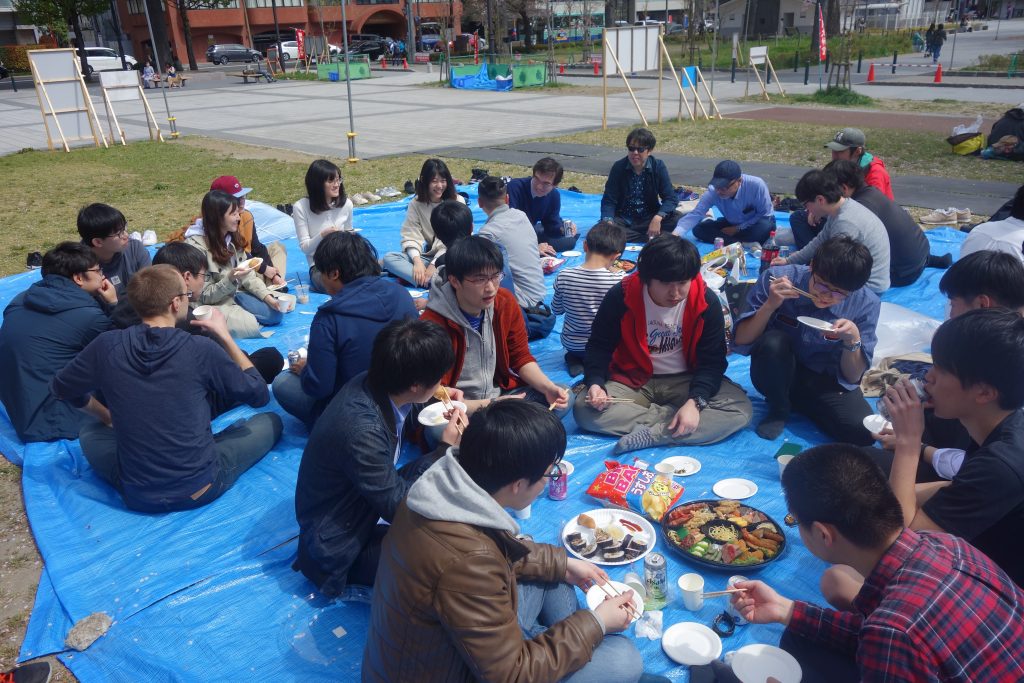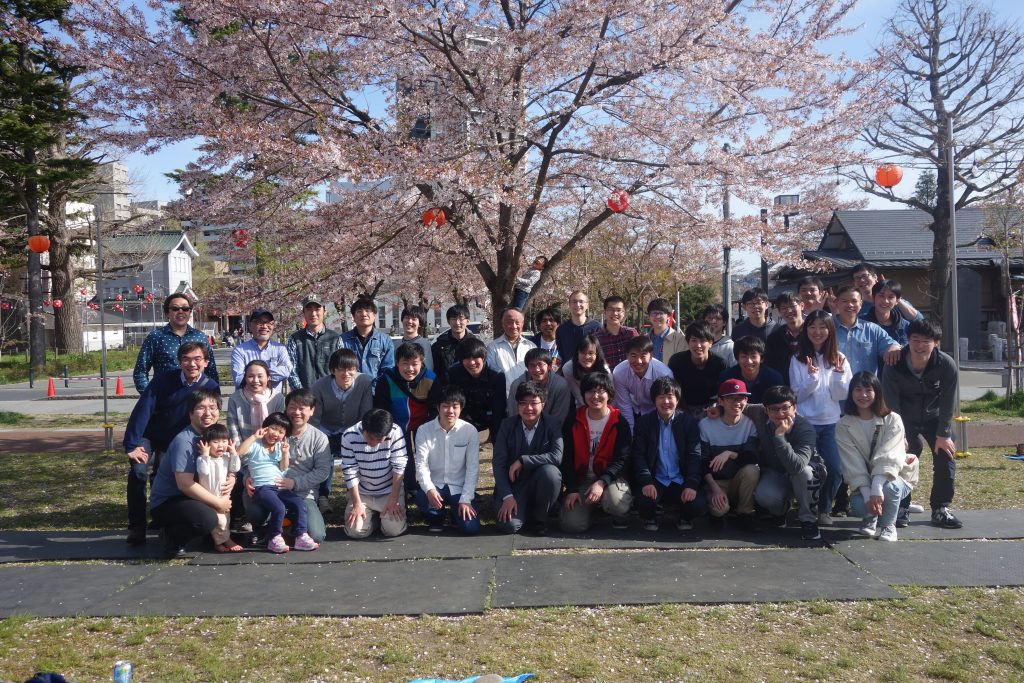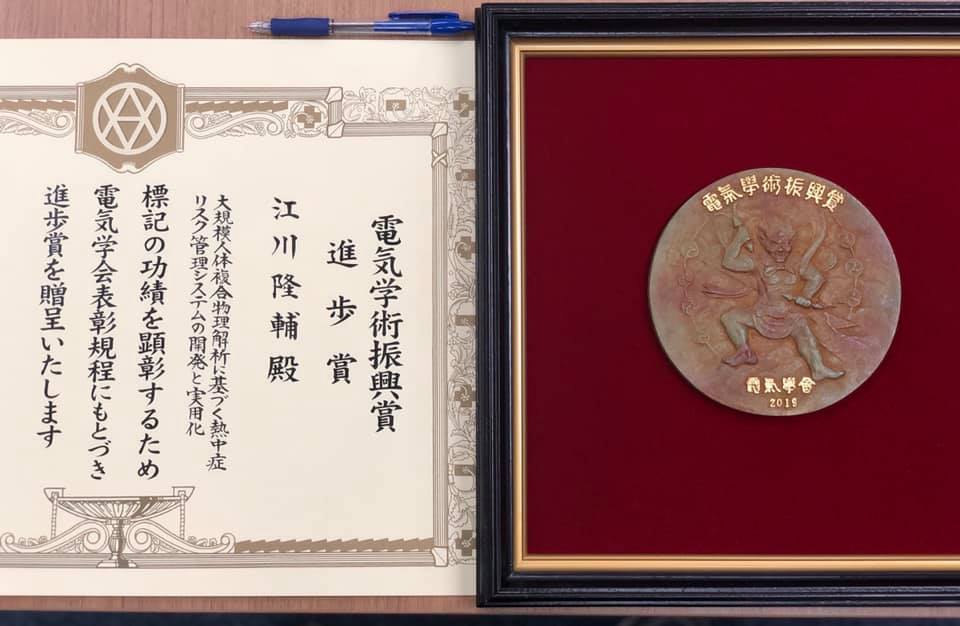7/25に北海道北見市の北見市民会館で行われたSummer United Workshops on Parallel, Distributed and Cooperative Processing(SWoPP2019)でM1の江端君が発表しました.
題目:NEC SX-Aurora TSUBASAにおけるバンク競合の回避に関する一検討 江端直樹,江川隆輔,磯部洋子,高木亮治,滝沢寛之
M1 Student Ebata Had a Presentation at a Joint Research Presentation with Kobe University
On July 19th, a joint research presentation with the Computational Infrastructure Laboratory at Kobe University was held, and M1 student Ebata made a presentation.
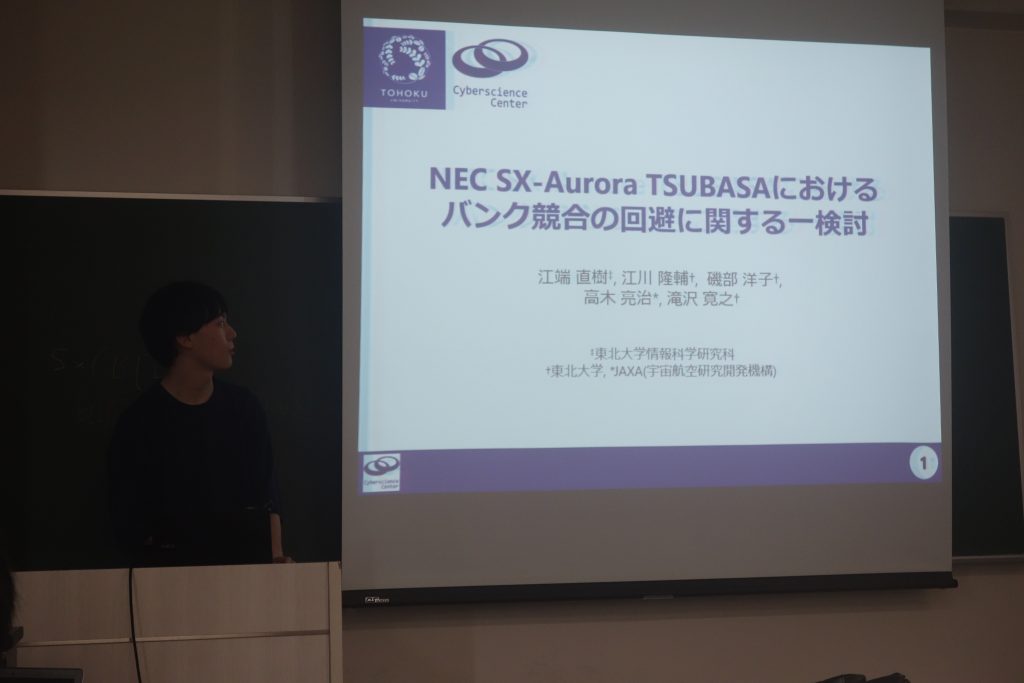
神戸大学との合同研究発表会でM1の江端君が発表
7/19日に神戸大学計算基盤研究室との合同研究発表会が開催され,M1の江端君が発表しました.

M1 student Ebata had a presentation in ISC2019
In the poster section of International Supercomputing Conference(ISC2019) held in Frankfurt Germany on 18th June, M1 student Ebata had a presentation. Here are the details:
Naoki EBATA, Ryusuke EGAWA, Yoko ISOBE, Ryoji TAKAKI, and Hiroyuki TAKIZAWA “Memory First : A Performance Tuning Strategy Focusing on Memory Access Patterns” International Supercomputing Conference(ISC2019), June 19
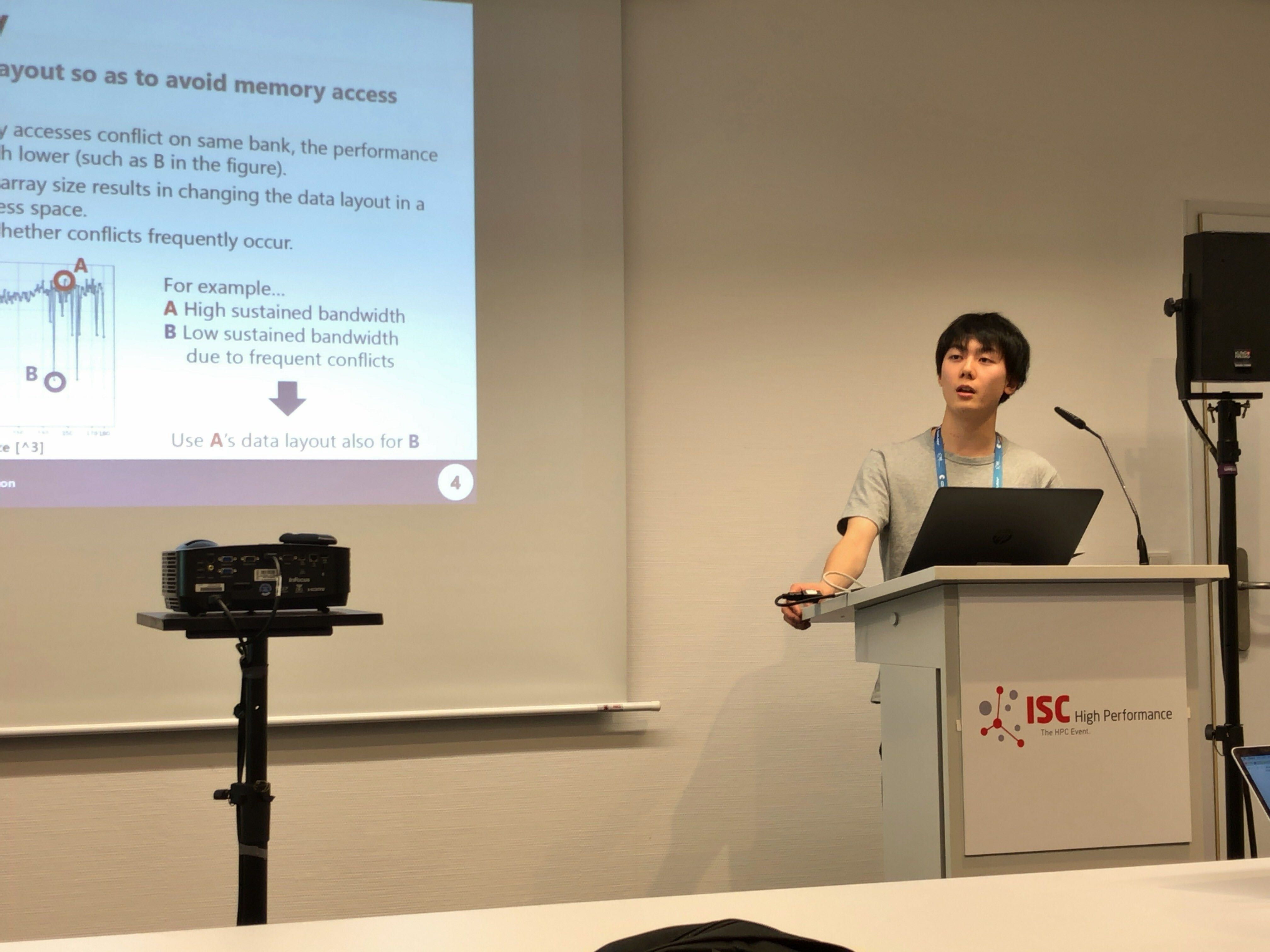
ISC2019においてM1の江端君が成果発表
6/18にドイツのフランクフルトで開催された国際学会International Supercomputing Conference(ISC2019)のポスターセッションでM1の江端君が成果発表しました.発表内容は以下の通りです.
Naoki EBATA, Ryusuke EGAWA, Yoko ISOBE, Ryoji TAKAKI, and Hiroyuki TAKIZAWA “Memory First : A Performance Tuning Strategy Focusing on Memory Access Patterns” International Supercomputing Conference(ISC2019), June 19

江川准教授が第75回電気学術振興賞(進歩賞)を受賞しました
江川隆輔准教授が,2019年5月30日(木)に開催された一般社団法人 電気学会第107回通常総会にて令和元年表彰として第75回電気学術振興賞(進歩賞)の表彰を受けました.
電気学術振興賞(進歩賞)は,電気に関する学術・技術において新規な概念・理論・材料・デバイス・システム・方法等を新たに提案あるいはこれらの提案を実証した者,および電気に関する製品・設備等を新たに完成または改良し,堅調な成果をあげた者に与えられる賞です.今回は,名古屋工業大学 平田教授らとの共同研究を通して,熱中症リスクを複合物理解析と温熱生理モデルを組み合わせた年代別等の人体モデルに基づき発汗量や体温上昇量など定量的なリスクを表現する技術の開発と,「熱中症セルフチェック」として日本気象協会が推進する「熱中症ゼロへ」プロジェクトのWebサイトにて公開を通して,個人を考慮した熱中症リスクの評価を可能とした新規性,一般の方でも活用しやすい実用性が高く評価されました.
サイバーサイエンスセンター スーパーコンピューティング研究部(大学院情報科学研究科 高性能計算論講座)では,計算科学を専門とする研究者の皆さまとスーパーコンピュータを活用,その成果を社会に還元できる共同研究を進めていきます.
受賞内容
- 題目:「大規模人体複合物理解析に基づく熱中症リスク管理システムの開発と実用化」
- 対象者:平田晃正(名古屋工業大学)、江川隆輔(東北大学)、柏 達也(北見工業大学)、Laakso, Ilkka (アールト大学)、堀江 祐圭(日本気象協会)
Graduation album photo was took
A lab group photo for graduation album took with 4th-year students.
Thank you very much for the professors and seniors who cooperated.
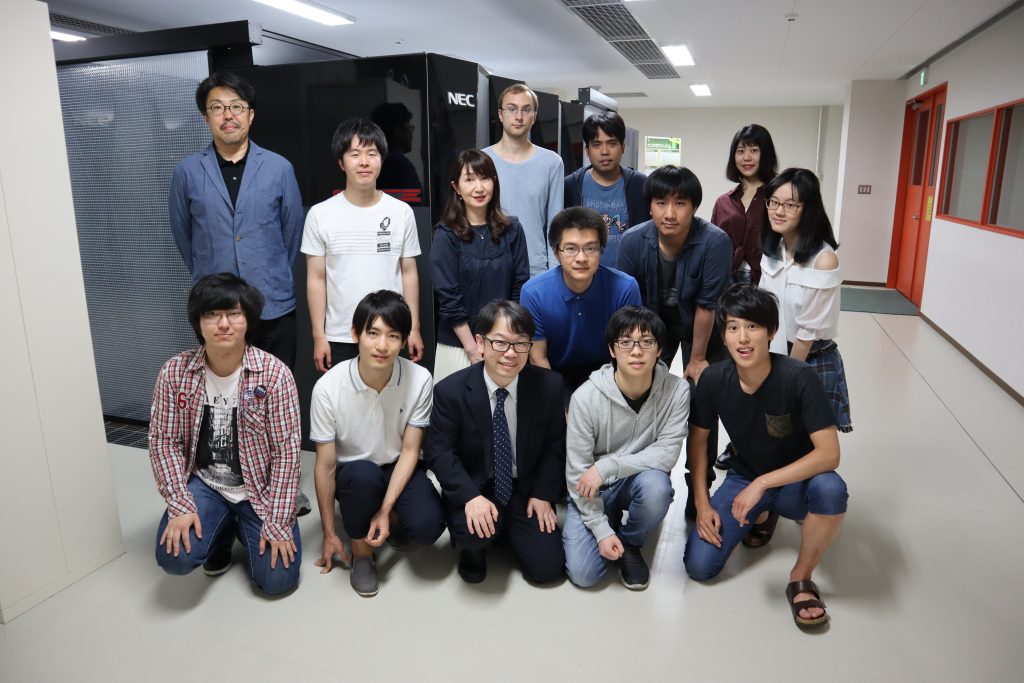
卒業アルバム用集合写真撮影
卒業アルバム用の研究室集合写真を学部4年生を中心として撮っていただきました。
ご協力いただいた先生先輩方ありがとうございました。
学術研究員を募集します!(応募締め切り7月31日)
この度,東北大学サイバーサイエンスセンター,スーパーコンピューティング研究部では,学術研究員(ポスドク相当)を募集します.応募締切は7月31日です.
詳細は,以下のJREC-IN 「東北大学サイバーサイエンスセンター 学術研究員(ポスドク相当)公募」をご覧ください.
研究活動に意欲のある方からのご応募をお待ちしております.
The hanami party was held
Our lab held a hanami party with Kobayashi lab and Goto lab in the West Park on April 20th.
Under the cherry blossoms, we talked with each other and enjoyed snacks and beer. Everyone had a great time!
